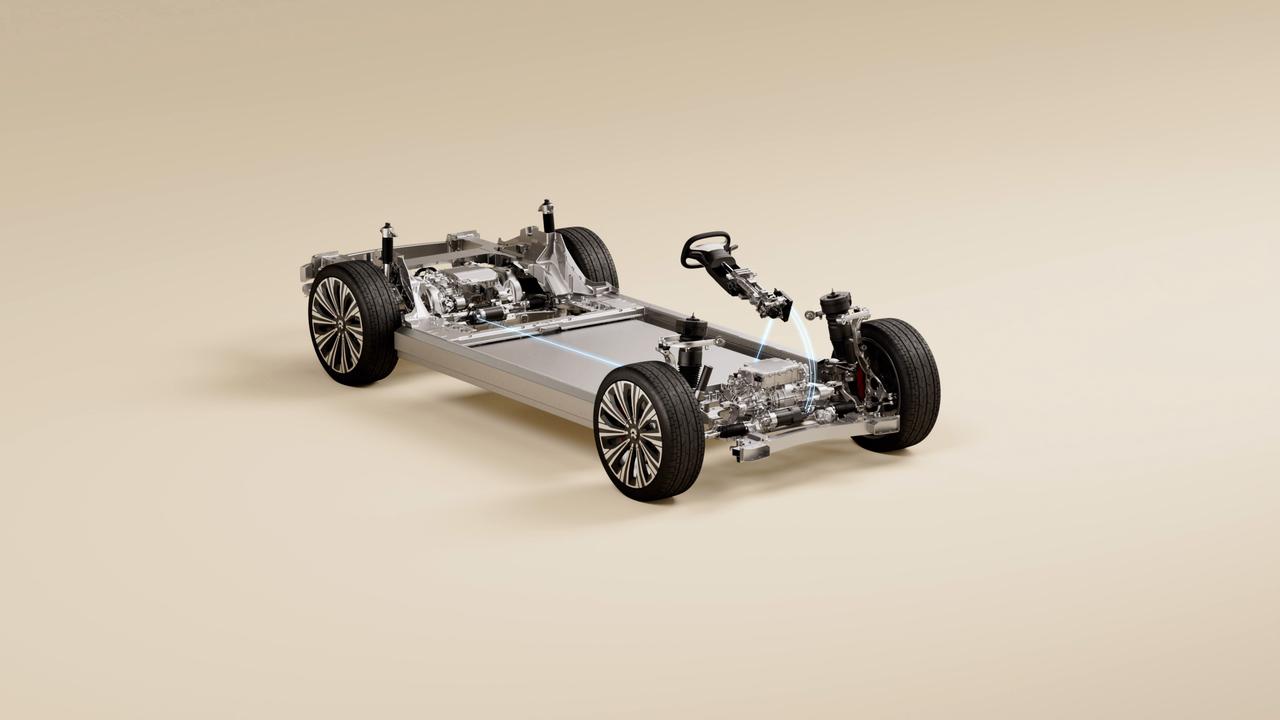On December 9, 2024, NIO announced that its ET9 received mass production approval for steer-by-wire technology from the Ministry of Industry and Information Technology, becoming the first vehicle in China equipped with this technology.

Steer-by-wire technology replaces the traditional mechanical connection between the steering wheel and the steering wheels with electronic signals. This enhances steering ratio, steering feel, and road feedback, paving the way for advanced autonomous driving and creating more space in the driver’s seat. NIO held an online briefing today regarding the ET9’s steer-by-wire technology, during which they shared six challenges associated with it.

-
To achieve different steering feels at varying speeds, FAW Audi’s dynamic steering and BMW’s active steering employ a complex mechanical structure, which may pose challenges in terms of reliability and noise. In contrast, steer-by-wire allows for customizable steering angles but requires careful calibration; for example, setting 150/180/240° results in distinctly different performances. Ensuring driver and passenger comfort is a key challenge.
-
The requirement for motor power is significant to simulate realistic steering feel, necessitating a high-power motor for optimal transmission ratio.
-
System response delay and stability are critical; regardless of road conditions, the steering wheel must halt simultaneously with the wheels, maintaining stability at a fixed angle without oscillation.
-
Subjective and objective dynamic evaluation is crucial; certain steering experiences should mirror traditional ones while offering new user experiences. The task of tuning steering feel may double compared to previous challenges.
-
The calibration of new functions is essential, such as scenarios where minimal steering adjustment is necessary while parking. The separation of steering wheel and steering mechanism in steer-by-wire allows for improved maneuvering without additional physical input, utilizing steering mechanisms for efficiency. Distinct algorithms for low-speed and high-speed steering ratios enhance maneuverability and stability, respectively.
-
Functional safety is ensured through two approaches; one involves system degradation with alerts to the driver, indicating that the steering system is compromised while the vehicle remains relatively safe to drive. The other relies on redundancy systems, such as rear-wheel steering, to maintain basic steering capabilities, akin to BYD’s safety technology.In the online communication session regarding NIO’s steer-by-wire technology, a quick Q&A summary was provided focusing on experiences and safety aspects of the NIO ET9.

Q: Can steering feel be customized?
A: NIO has currently debugged several options for users and is considering providing selections for user customization. It is feasible yet challenging, and future product definitions and analyses will further it.
Q: Is the steer-by-wire system easy to adapt to, or does it require adjustment?
A: The ET9’s steering feel is relatively easy to adapt to with just 240° rotation and an oval steering wheel shape, making it natural to handle with both hands.
Q: Is the steering feel of the NIO ET9 more akin to current cars or is it innovative?
A: On medium to high speeds, the ET9’s steering feel remains fairly consistent with traditional steering column vehicles. At low speeds, the rotation angle is smaller and requires adaptation.
Q: Does the steering wheel turn under NOP?
A: Yes, it does.
Q: Is making right-hand drive cars easier with steer-by-wire?
A: Indeed, it greatly facilitates right-hand drive vehicles.
Q: How does NIO filter road condition feedback?
A: Feedback is based on the car’s body, yet some road imperfections are simulated in steering feedback to provide necessary road information.
Q: During parking, if interrupted does the steering wheel align with the wheels’ position?
A: The system may indicate releasing the steering wheel via the screen, allowing the wheels to align, before taking manual control. Wheels aligning to the steering wheel can be more sensible, though both methods are areas of key research in steer-by-wire.
Q: Is there consideration for a “Steer-by-Wire Training” mode for ordinary users?
A: Efforts are underway, alongside experiential colleagues, to draft a simplified guide for users.
Q: If the wiring harness is severed in an accident, does the steering system fail immediately?
A: The ET9 features two independent steering systems and wiring harnesses. In severe accidents, conventional steering systems typically fail as well. For most extreme scenarios, vehicle edge adjustments and body alignment can be achieved via rear-wheel steering and torque distribution capabilities.
As China’s first model equipped with steer-by-wire technology, the NIO ET9 presents a fairly novel experience for drivers. Globally, apart from the NIO ET9, Tesla’s Cybertruck is the only other mass-produced vehicle featuring this technology.The NIO ET9, as China’s first model to receive a mass production license with steer-by-wire technology from the Ministry of Industry and Information Technology, marks another breakthrough in Chinese technology. The formulation of national standards related to steer-by-wire is expected to begin in 2025, with NIO participating as a core member and the sole mass-producing automobile company, contributing to establishing standards for future steer-by-wire technologies and models. If you have any questions about steer-by-wire, feel free to leave a comment below.
This article is a translation by AI of a Chinese report from 42HOW. If you have any questions about it, please email bd@42how.com.